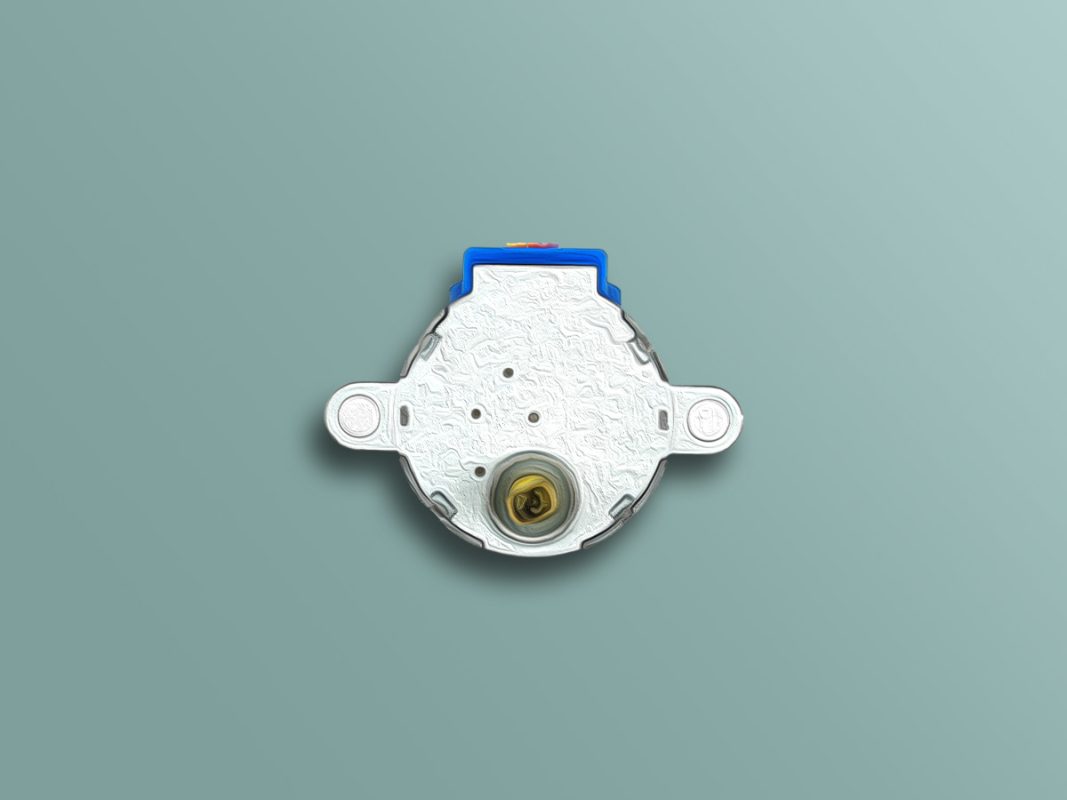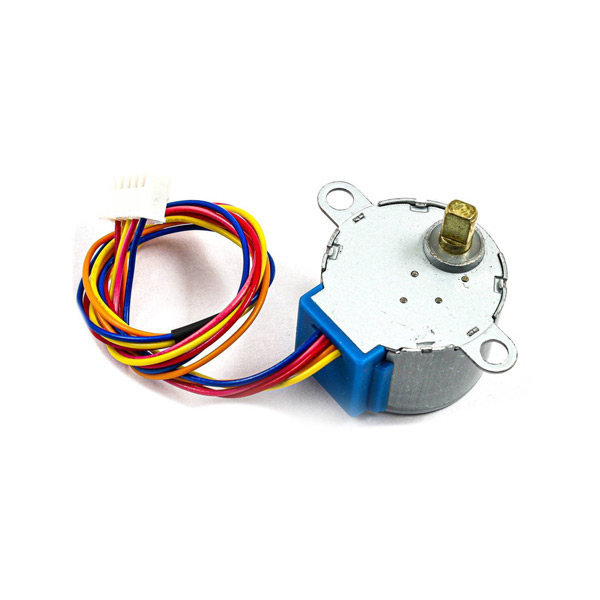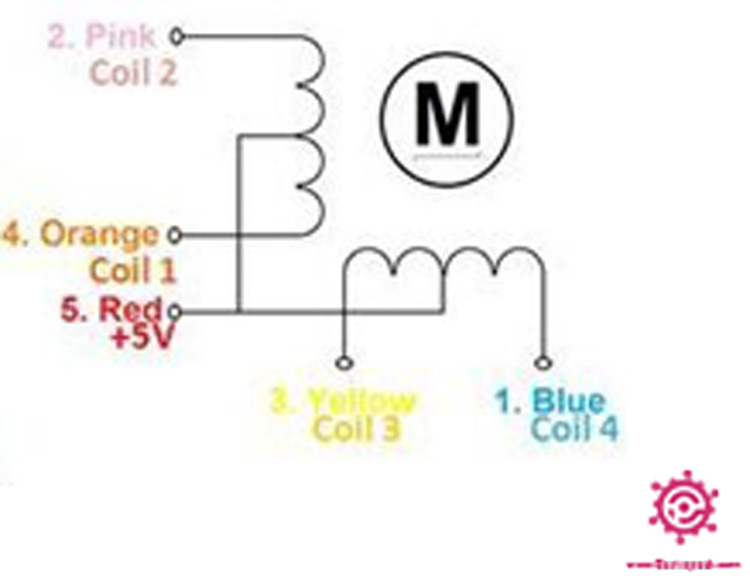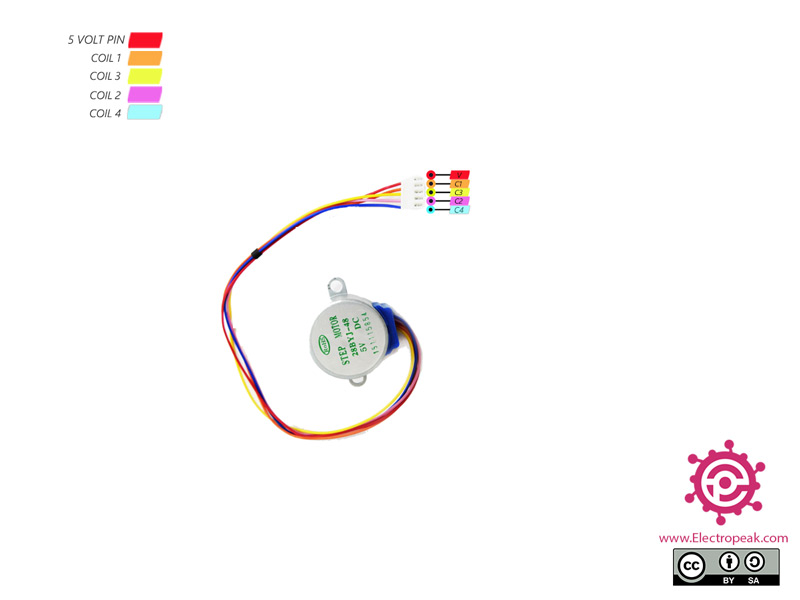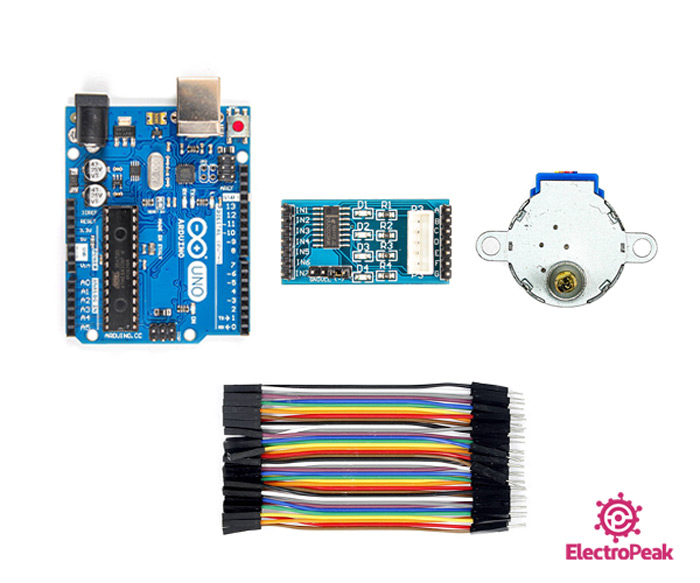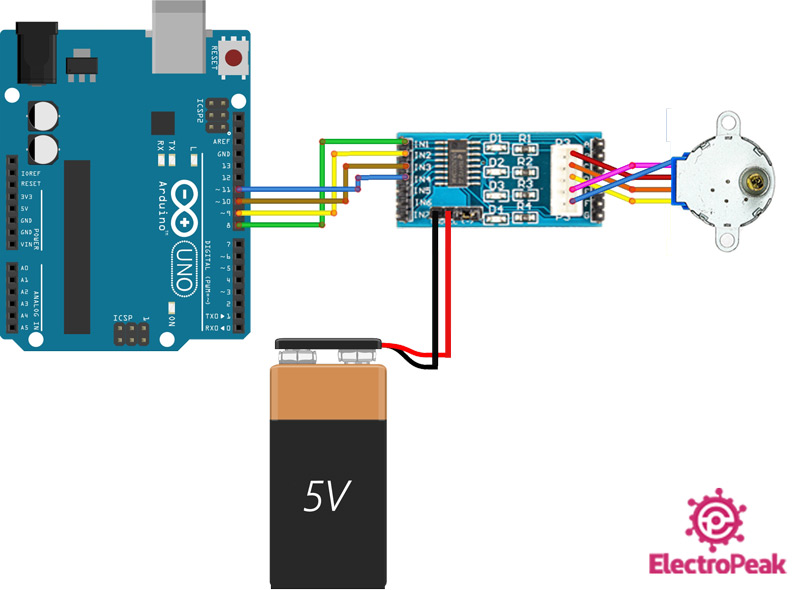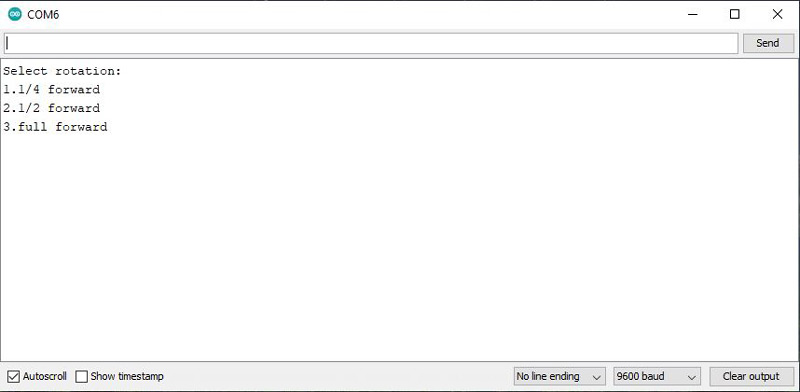28BYJ-48 Stepper Motor Features
We usually use stepper motors when we need precise control of the motor shaft. These motors can be used in robot arms, 3D printers, CNC machines, etc. Stepper motors convert electrical pulses into discrete mechanical movement. The resolution and rotation speed of the motor shaft depend directly on the frequency of the input pulses. One of the most important advantages is that they can control precisely in an open loop system.
28BYJ-48 Stepper motor is one of these motors. This motor consists of 4 stationary coils and has a 64:1 gear reduction. This motor has 5 wires. The red one is connected to a 5V power supply and others are for each stationary coils.
Features:
- Rotates 11.25 degrees per step in full step mode
- Frequency: 100 Hz
- Pull in torque: 300 gf.cm
Note
Note
We use a UL2003 driver to drive this motor.
You can download the datasheet of 28BYJ-48 motor here.
28BYJ-48 Stepper Motor Pinout
The inside coils of motor are as follows:
This motor has 5 pins:
- V: 5V pin – Red
- C1: Coil 1 – Orange
- C2: Coil 2 – Pink
- C3: Coil 3 – Yellow
- C4: Coil 4 – Blue
You can see the pinout of these modules in the image below.
Required Materials
Hardware Components
Software Apps
Interfacing 28BYJ-48 Stepper Motor with Arduino
The following circuit show how you should connect Arduino to 28BYJ-48 motor. Connect wires accordingly.
Warning
Be careful not to use power supply greater than 5V, because the motor maximum allowed voltage is 5V.
Step 2: Code
Upload the following code to your Arduino.
/*
ULN2003-4Phase-Stepper-Motor-Driver
modified on 06 Dec 2020
by Amir Mohammad Shojaee @ Electropeak
Home
based on Arduino library
*/
#include <Stepper.h>
const int stepsPerRevolution = 2048;
const int rpm = 12;
Stepper stepper1 = Stepper(stepsPerRevolution, 8, 10, 9, 11);
void setup() {
stepper1.setSpeed(rpm);
Serial.begin(9600); // opens serial port, sets data rate to 9600 bps
Serial.println("Select rotation: ");
Serial.println("1.1/4 forward");
Serial.println("2.1/2 forward");
Serial.println("3.full forward");
}
void loop() {
if (Serial.available() > 0) {
// read the incoming byte:
int incomingByte = Serial.read();
switch (incomingByte) {
case '1': // if input=1 ....... motors turn One_quarter
One_quarter();
break;
case '2': // if input=2 ....... motors turn One_half
One_half();
break;
case '3': // if input=1 ....... motors turn full
full();
break;
}
delay(200);
incomingByte=0;
}
}
void One_quarter(){
stepper1.step(stepsPerRevolution/4);
delay(100);
}
void One_half(){
stepper1.step(stepsPerRevolution/2);
delay(100);
}
void full(){
stepper1.step(stepsPerRevolution);
delay(100);
}
First, the motor library is included. Next, two variables of rotation step and motor speed are declared in terms of RPM. We also set its speed to 12RPM. So, each rotation lasts 5 seconds. Control pins are then declared in the above order.
You can select the amount of rotation and whether it’s clockwise or counter-clockwise as the user.
Take a look at the Serial Monitor here. There are 3 options:
- 1/4 Rotation forward
- 1/2 Rotation forward
- Full Rotation forward
